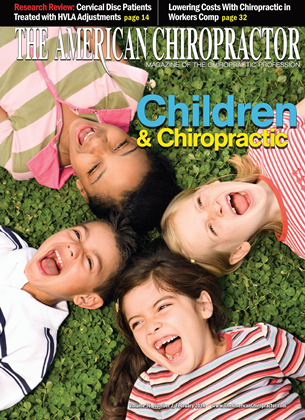Confirmed Symptomatic Cervical Disk Herniation Patients Treated With High-Velocity, Low-Amplitude Spinal Manipulation Therapy: A Prospective Cohort Study With 3-Month Follow-Up Journal of Manipulative and Therapeutics October 2013: Vol. 36: pp. 461-467 Cynthia K. Peterson. RN. DC. M.Mcd.Ed: Christof Schmid. DC: Scrafin Leemann. DC: Bernard Anklin. DC: B. Kim Humphreys. DC, PhwD Patients with radiculopathy from cervical disk herniations (CDHs) typically have acute neck pain with associated arm pain. The purpose of this study was to investigate outcomes of patients with cervical radiculopathy from cervical disk herniation (CDH) who are treated with spinal manipulative therapy. This study used 50 patients with a mean age of 44 years. Treatments were repeated 3 to 5 times per week for the first 2 to 4 weeks and carried on 1 to 3 times per week thereafter until the patient was asymptomatic. They were evaluated at baseline. 2-weeks. 1-month, and 3-months. Patient clinic status was assessed with standard measurement outcome evaluation using the numeric rating scales (NRS) for pain, and the Neck Disability Index (NDI). The chiropractic treatment was described as follows: "High-velocity, low-amplitude spinal manipulations were administered by experienced doctors of chiropractic." "The treatment procedure was a standardized, single, high-velocity, low-amplitude ccn ical manipulation with rotation to the opposite side and lateral flexion to the same side of the affected arm." "The DC stood on the affected side of the supine patient's neck, with an index contact on the articular pillar of the most symptomatic vertebral motion segment on the side of the patient's complaint and at the spinal level clinically assessed to correspond with the MRI findings." "Rotation to the opposite and lateral flexion to the ipsilateral side was used to take out skin and joint slack." "Once the patient was positioned, a high-velocity, low -amplitude thrust was applied, with the goal of moving the affected segment and producing an audible release." An audible release was achieved in most case. At two weeks. 55.3% of all patients reported that they were significantly improved and none reported being worse. At one month. 68.9% were significantly improved. By three months 85.7% were significantly improved with no patients being worse. The authors concluded: "There were no adverse events in this cohort of patients." "Most patients in this study with MRI-proven symptomatic CDHs who were treated with high-velocity, low-amplitude spinal manipulation reported clinically significant improvement at all time points, particularly at three months." "Patients with symptomatic MRI-confirmed cervical disk her-niations treated with SMT to the level of hemiation reported high levels of clinically relevant improvement at two weeks, one month, and three months after the first treatment." Dr. Dan Murphy graduated magna cum laudefrom Western Stales Chiropractic College in 1978. He received Diplomat status in Chiropractic Orthopedics in 1986. Since 1982, Dr. Murphy has served part-time as undergraduate faculty at Life Chiropractic College West, currently teaching classes to seniors in the management of spinal disorders. lie has laught more than 2000 postgraduate continuing education seminars. Dr. Murphy is a contributing author to both editions of the book.Motor \ ehicle Collision Injuries audio the hook Pedialric C liiropractic. Hundreds of detailed Article Reviews, pertinent to chiropractors and their patients, are available at Dr. Murphy's web page: www.danmurphydc.com
 View Full Issue
View Full Issue






